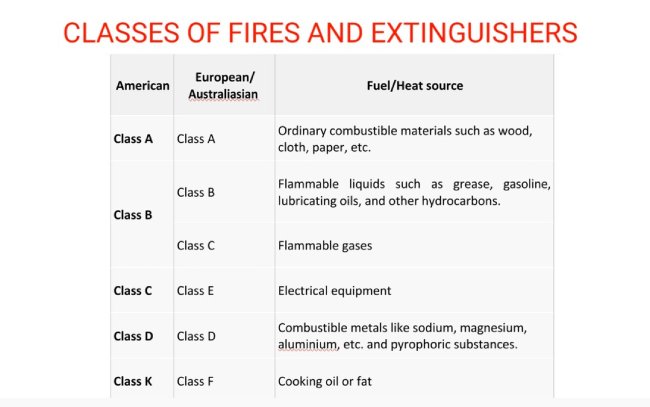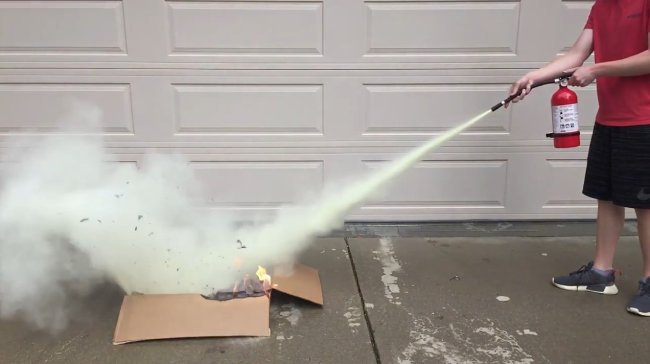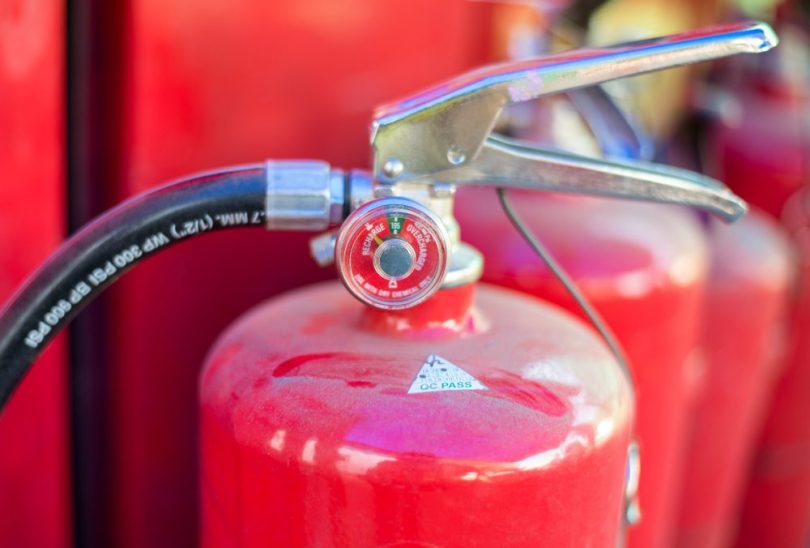Fire extinguishers need recharging only for a few minutes after each use to stay effective. The equipment for recharging fire extinguishers is generally available at most fire departments. Professional fire equipment manufacturers can also assist.
In order to perform the task, you must follow a few basic steps, whether you do it yourself or hire a professional.
Why Recharge Fire Extinguishers?
1. A recent test was conducted on your extinguishers
Your fire extinguisher may be discharged so the technician can test that all the discharging mechanisms and gauges are working properly.
Repairs need to be made following the test, and the extinguisher must be recharged.
2. You discharged a small amount in a recent fire
You should recharge the nearest extinguisher as soon as possible if you or your employees used it to extinguish a fire.
You should recharge the extinguisher immediately, even if you only discharged a tiny amount.
3. A routine check found a partially fired extinguisher
Ensure that the fire extinguishers are visually inspected once a month.
Check each extinguisher for leaks and refill it ASAP if the gauge indicates low pressure on any of them.
4. Someone accidentally discharged an extinguisher
Whenever pressure is lost, even for a few milliseconds, it can cause fire extinguishers to malfunction.
You need to have your fire extinguisher recharged immediately after it’s discharged, no matter what the reason is.
Recharge a Fire Extinguisher: Step-by-step Guide
Step 1: Getting Started
You should identify the type, or rating, of the fire extinguisher before recharging it. Fire extinguishers are available in classes A, B, C, and D. Class A is a foam or water extinguisher that is often found as a silver cylinder. This one is used on wood, rubber, paper, and plastics.
The other classes B, C, D are found in a red cylinder. The class B and C are carbon dioxide ones, Co2 with dry chemicals, and are used on oil-based paint fires, gasoline or grease, and electrical fires. The D class extinguishers are used for industrial fires such as metal.
These ones contain dry powders. It is important to know each type and what they are filled with. You cant fight certain fires with the wrong extinguisher content. This can make the fire more dangerous.

Step 2: Extinguisher discharge
Fire extinguishers need to be recharged if they’ve been used, even just once, and not till they’ve been empty. Extinguishers are emptied by discharging. The handle should be squeezed and held until no more liquid or dry chemical is coming out of it.
Refilling, also known as recharging, involves emptying out any remaining liquid or dry powder completely before it is recharged.

Step 3: Inspecting and cleaning
Before recharging, it is important to clean the extinguisher and check the various parts. Even the bottle exterior needs to be cleaned along with the squeeze lever and hose. Ensure the hose, nozzle, tubing, and the o ring used to secure it closed are all intact.
It may be necessary to replace the single parts or consider buying an entirely new extinguisher if the extinguishers show signs of significant wear and tear, are weak and brittle, or are clogged.
By submerging it in water, you can verify that the seal is tight. When bubbles appear, the seal leaks. Replacing or retightening the “O” ring is necessary.
You will need access to a pressurizing machine if you are going to carry out the refiling process yourself. You will also need the contents such as wet or dry chemicals.
There’s a product called Fireade2000 that’s available to the public and fire departments that’s compatible with all types of extinguishers. You will need the product, funnel, a bucket that can hold 10 quarts, and water.
Anybody can do the recharging as long as instructions are followed on the packet and an air compressor is used to finish it up.
Any fire extinguisher should be filled to the predetermined level, no matter what product is being used.
Pressurize the contents of the extinguisher. Stop when the dial shows you have reached the green zone or around 100 to 176 psi.
Step 4: Finishing up
Once the material goes into the extinguisher and is put under the correct pressure, you need to seal it up. You can check for leaks again in the water and adjust the extinguisher if needed.
Tag the extinguisher with the information of the amount of pressure the extinguisher was put under the recharge date and the details of the person completing the process.
How Often Should You Recharge and Inspect Fire Extinguishers
By timetable
Visual inspections – once every 30 days
Maintenance inspections – once per year
Internal maintenance – every 5, 6, 12 months
By service type
Maintenance
A well-maintained portable fire extinguisher means it is inspected and repaired as needed,
A professional fire protection company should inspect fire extinguishers annually.
In addition to being well-equipped to ensure compliance, these companies are also trained to recognize and correct potentially hazardous problems.
Hydrostatic for dry chemicals
A dry chemical extinguisher, which requires a hydrostatic test every 12 years, also requires an internal inspection every six years.
Inspection
Every month, employers are required to inspect portable fire extinguishers.
Hydrostatic for wet chemicals
In most cases, carbon dioxide, pressurized water, along with the extinguishers container wet chemicals must be hydrostatically tested on the five-year mark each time.
Where should fire extinguishers be recharged?
Distributors of fire equipment
Find out if it’s time to repair or replace your fire extinguisher by getting in touch with your local fire equipment dealer company.
Used equipment can be inspected and recommendations made.
An emergency response team
You local fire department can do this. Appointments may need to be made for this.
When to replace your rechargeable fire extinguisher
1. If any parts are damaged
Your fire extinguisher can still hold some charge if damaged, but if the pin is broken or the handle is wobbly, it might not work correctly during a fire.
Regular inspections should show these problems and allow you to replace or repair where needed.
2. Size of extinguisher
There are times when replacing an entire unit is the cheaper option. This is particularly true for the smaller canisters.
To find out for sure, check out your pricing options.
3. Canister loses pressure
If the extinguisher has not been used for awhile, but you find the gauge has slowed down, you might have a cracked shell or leaky nozzle.
Fire Extinguishers: Refillable or Disposable? Which Suits You?
Do you have any long-term or short-term plans?
Invest in temporary, disposable equipment to last your business a while, or invest in extinguishers that can be refilled and last for a long time, depending on your future expansion plans.
Are you at risk of fire?
Your business may need to change its equipment when it undergoes certain renovations or changes in a certain area of the building.
It may be necessary to update your extinguisher class from Class A – Ordinary to:
- Flammable liquid – class B for new hazards on site
- Flammable gases- class C if you have started with new chemicals
- Combustible metals – class D for new metal equipment
- Electrical equipment – class E for new computer appliances
- Cooking fats- class F adding an extension like a kitchen
FAQs
1. What are the dangers of dropping a fire extinguisher?
Ans. Dropping a fire extinguisher may damage its functionality because they are pressurized.
2. Can I reuse an extinguisher once it has been partly used?
Ans. I recommend having it refilled. There are no guarantees as to how much charge remains in the battery, and the valves tend to leak.
3. Why do extinguishers expire?
Ans. After time the extinguisher chemicals can lose charge, and the pressure can drop.
4. When are fire extinguishers not useful?
Ans. When there is a large fire that is out of control or the class of fire is near live electrical equipment
5. How do I know if a fire extinguisher is not safe?
Ans. Everyone can check the pressure gauge as it is the most common indicator.
If the indicator is in either of those red zones, you need to have it checked asap
6. Why if I recharge a fire extinguisher wrong?
Ans. The fire extinguisher can leak and become ineffective if the recharge isn’t done properly.










Leave a Comment